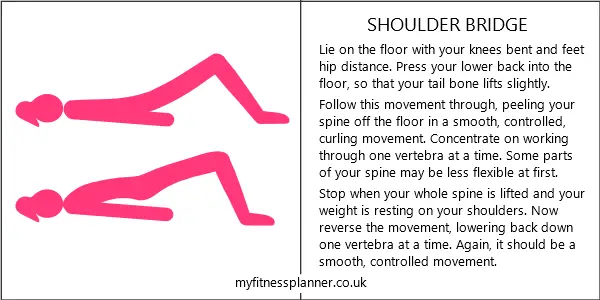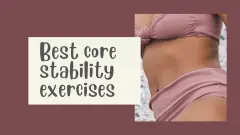To have flat, well-conditioned abs you need to have strength in the core stabilising muscles. This beginner core exercises program uses 6 exercises which focus on these muscles. The workouts get a bit harder each week, so that your strength gradually increases. At the end of the program, you should have:
- Increased strength in your core stabilising muscles
- Improved posture
- Improved flexibility in your spine, meaning less likelihood of back pain and injury
- Increased awareness of your core stabilising muscles and how to engage them
The instructions for the exercises are here in the post and at the end you can download a tracker and schedule for the 5 week program.
Beginner core exercises 6 week program
Before you start this program, you should understand how to find neutral pelvis. The pelvis needs to be able to tilt forwards and backwards as we move, but bad postural habits can lead to it being in a forward or backward position at rest, instead of in the neutral position. In women, the forward position is common, especially after pregnancy. If you do core exercises with a tilted pelvis, they won’t work the muscles they’re supposed to work. This is how you find the neutral position:
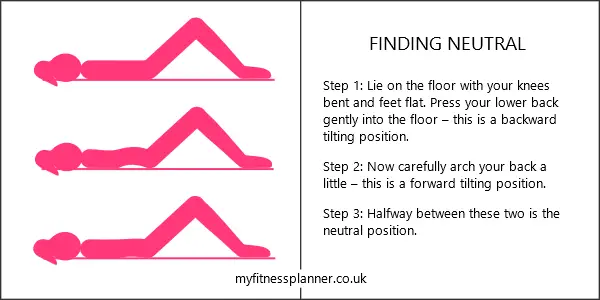
Please also read these exercise safety guidelines before starting this program.
You’ll need a cushioned surface for the workout – ideally an exercise mat. See an exercise mat buying guide here.
The program
These are the exercises and the number of reps/hold times for each of the 6 weeks. Instructions for the exercises are below the chart.

Exercise instructions
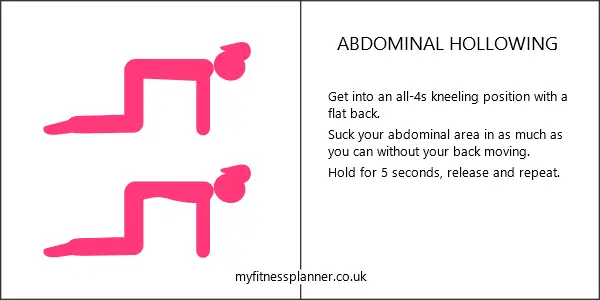
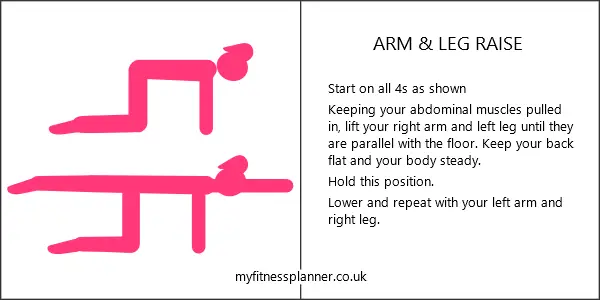
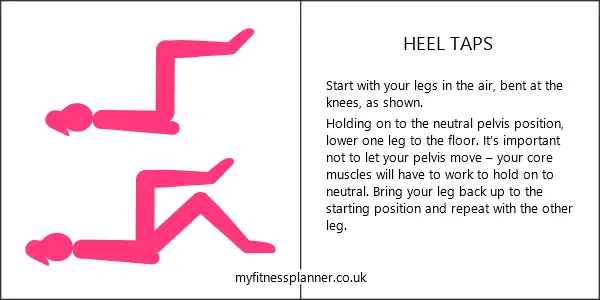
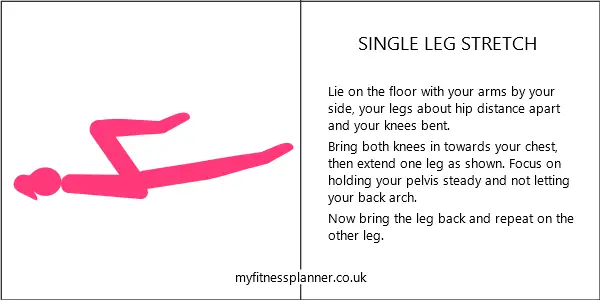
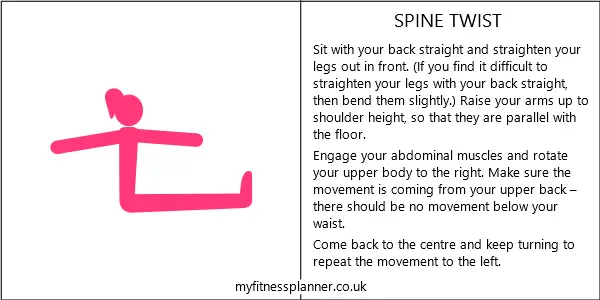
Related to beginner core exercises
Ab workouts FAQ
The stock answer to this is that you can’t get rid of fat from a specific area. This is repeated frequently and emphatically by almost everyone involved in fitness. Given that it’s the go-to answer, you would think that there’s a pile of evidence to support it. In fact, the evidence is surprisingly weak. On the other hand, there’s no evidence that you can exercise to burn fat from a specific area either.
What we do know for sure is that our bodies have preferred places to store fat – and the abdominal area is one of them. So you’re not likely to have a fat-free belly until you’re a healthy weight. The best way to be a healthy weight is of course to have a healthy diet and to exercise regularly. Any exercise helps with weight control.
Even if it doesn’t burn belly fat, regular ab exercise will make a difference though. The deep core muscles pull the abdominal area flat and having a strong core can make a real difference. In fact it’s often the case that what people think is fat is just poor muscle tone allowing the abdomen to protrude.
So, the best things you can do to look slimmer around your middle are to make sure you’re a healthy weight and do some core training.
Plank holds have been an enormously popular abs exercise for years now. This is probably due to the buzz surrounding the exercise in the form of challenges and extreme hold times, rather than being due to its merits as an effective exercise.
Done correctly, the plank will engage the deepest abdominal muscle, the transverse abdominis (TA). This is the one that plays the biggest part in pulling the abdominal area in flat, as well as playing an important role in pelvic and spinal stability. It’s a challenging exercise and most people will struggle to hold the correct position for more than a minute. These are the good points. However, the plank has its drawbacks:
- Doing it with correct technique is difficult for those who are not used to core training. To be effective, the back and legs must form a straight line (like a plank). Inexperienced exercisers fail to do this.
- It’s a static exercise (ie the muscles are held contracted). There are two problems with static exercises. One is that the muscles are only worked in one position and the other is that it causes blood pressure to increase.
- It’s not functional – we do nothing vaguely resembling the plank in every day life. If we want to train our TA to engage when we’re active, then holding it in a static contraction isn’t the best way.
So should you do plank holds? Yes, it’s good to add them to your abs routine sometimes or to do a plank challenge for variety. But you should make sure your technique is correct and you shouldn’t waste your workout time trying to build up excessively long holds.
As with most “best exercise” questions, the answer depends on what you’re trying to achieve. The two main goals people have are flat abs and 6 pack abs. To have a flat abdominal area you need to train the deeper abdominal muscles. This is done by doing core stabilising exercises. The 6 pack muscles are the top layer of ab muscles and are trained by crunches and similar exercises – any exercise in which the upper body and lower body come closer together against a resistance. If you want to train all your ab muscles, bicycle crunches are a good all-round exercise.
